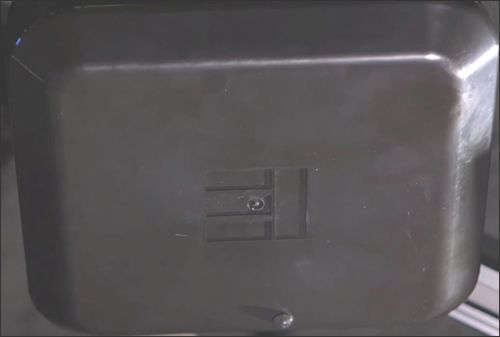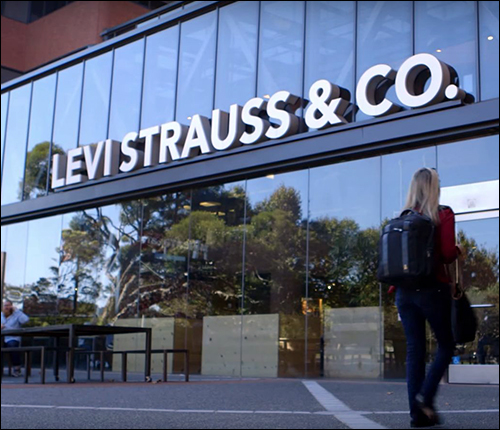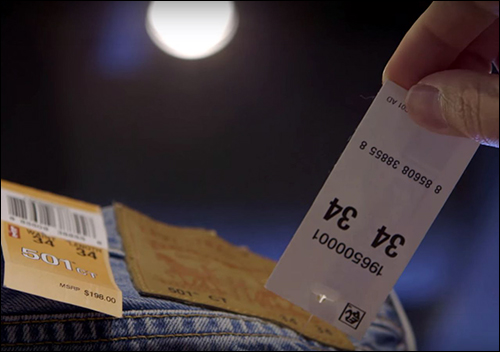Intel Corp. is marketing the Intel Retail Sensor Platform, an RFID-based system designed to make retail radio frequency identification deployments easier, as well as enable inventory tracking to be performed in real time. The platform consists of ultrahigh-frequency (UHF) RFID readers with integrated antennas, wired to an Intel Gateway device that forwards the data to a server. The platform also includes an Intel application programming interface (API) that allows RFID systems integrators to write software for linking the RFID data to a store’s existing software.
Since this past spring, Levi Strauss and Co. has been piloting the Intel Retail Sensor Platform at its Levi’s Plaza store, located at its headquarters in San Francisco. That pilot is still ongoing, says Dan Gutwein, director of retail analytics for Intel’s Retail Solutions division (part of the company’s Internet of Things group), who announced the new product’s release at RFID Journal’s RFID in Retail and Apparel 2015 event, held yesterday in New York.
At the Levi’s Plaza store, Intel installed approximately 21 readers (each complying with the EPC Gen 2 standard) and a single Intel Gateway device, with Smartrac providing the software that integrates the reader data with Levi Strauss’ back-end software. Gutwein says the Retail Sensor Platform supports any of its Gateway models, but in this case, the platform used one made with its Core i7 processor. The Retail Sensor Platform is about 34 to 40 percent faster and easier to install than a traditional reader and antenna deployment, he reports.
At the Levi’s Plaza store, Gutwein says, the Intel Retail Sensor Platform was able to provide nearly 100 percent inventory accuracy within a few days of the solution being activated. The store managers know not only what is in the store at any given time, but also when anything moves, and in what direction. With this data, he explains, the Levi’s Plaza store can track which products are taken to the fitting rooms and which are actually tried on, and then compare that information against the point-of-sale data.

Levi Strauss declined to comment, though in a video posted online yesterday by Intel, Noah Treshnell, Levi Strauss’ senior VP of retail and global retail capabilities, said, “We’re interested in technology that is going to enhance and improve the consumer experience in our stores.” That can be done, he explained, through inventory accuracy, by ensuring that all sizes and styles of jeans are onsite, and on the right shelves where customers are seeking them.
Intel is already preparing to launch Retail Sensor Platform pilots at stores operated by several other retailers, Gutwein says, and will work with solution integrators to enable those pilots. The company is also taking orders for the readers, with shipping slated to begin in March 2016.
Prior to launching the Retail Sensor Platform, the company evaluated the RFID reader and the adoption landscape. “We’ve looked at why RFID hasn’t scaled, especially in the retail sector,” Gutwein states. With RFID tags being applied to a growing number of items in order to track products in the supply chain, he notes, retailers could serve to benefit from those tags by reducing their own out-of-stocks and understanding their inventory levels onsite.
Intel determined that deployment of fixed solutions to track tagged goods within a store or back room required too much infrastructure installation for some retailers, as well as software integration. To address that issue, the firm developed a reader that uses power-over-Ethernet (PoE) and can be attached to a wall or ceiling. The readers are designed to provide “intelligence at the edge,” Gutwein says, by capturing the read data and conducting pre-set analytics, such as identifying only when a tag is being moved, and then transmitting that event data back to the Intel Gateway, which manages the collected read data and forwards it to a server.
The data is then managed by Smartrac software. “Through our cloud platform, we are able to take the sensory data from the smart sensor and sensor network and pull that into the cloud,” explained Leonard Nelson, Smartrac’s director of product development, in the Intel video. “We take that data and those events and translate that data into insight and information, and that insight goes to the executive team at Levi Strauss & Co., it goes to the in-store stylist, it goes to the supply chain.”
The quantity of readers per gateway could be considerably higher than the 21 installed at the Levi’s Plaza store, Gutwein says, though most stores would require only a single gateway. Intel is also providing an open API that a retailer’s software integrator can use to develop an RFID data-management system that could integrate into a store’s existing inventory software.
The solution is intended to make it faster and less expensive to install a system that tracks goods in real time, compared with the installation of traditional RFID readers. But that data is just the beginning of what retailers can collect with the Gateway, he says.
“RFID is just another sensor to me,” Gutwein says. Readers provide one key piece of information: where products are and where they’ve been. He adds that RFID data could be linked to information from other systems—such as video-based analytics regarding the movement of customer traffic, or data derived from Bluetooth beacons—to provide predictive intelligence.




